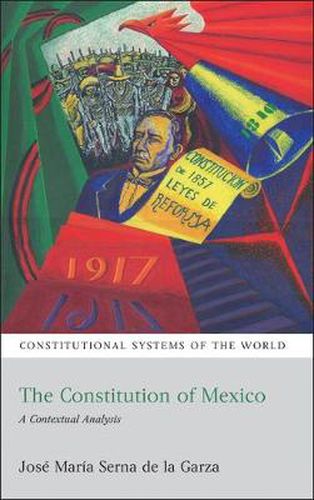Readings Newsletter
Become a Readings Member to make your shopping experience even easier.
Sign in or sign up for free!
You’re not far away from qualifying for FREE standard shipping within Australia
You’ve qualified for FREE standard shipping within Australia
The cart is loading…






This book provides an overview of Mexico’s political evolution since it became independent from Spain in 1821, and its current constitutional arrangements, principles and structures. The aim is to explain this evolution as the result of struggles between the interests and ideologies of different groups within Mexican society, each with a different political vision of how the State should be organised. Chapter 1 reviews Mexico’s constitutional trajectory, and explains why democracy, republicanism, federalism, separation of state and church, protection of fundamental rights and the Nation’s ownership of mineral resources first became constitutional principles. Chapters 2, 3, 4 and 5 deal respectively with democracy and the electoral system, and the legislative, executive and judicial branches of federal government. Chapter 6 introduces the institutional structure of Mexico’s federal system, while Chapter 7 discusses the rules, principles and institutions for the protection of human rights. Chapter 8 examines the constitutional regime of Mexico’s economy. The conclusion explains how a series of factors has combined to produce a gap between the formal Constitution and what can be seen as the living Constitution; bridging that gap presents Mexican politics and society with one of its great contemporary challenges.
$9.00 standard shipping within Australia
FREE standard shipping within Australia for orders over $100.00
Express & International shipping calculated at checkout
This book provides an overview of Mexico’s political evolution since it became independent from Spain in 1821, and its current constitutional arrangements, principles and structures. The aim is to explain this evolution as the result of struggles between the interests and ideologies of different groups within Mexican society, each with a different political vision of how the State should be organised. Chapter 1 reviews Mexico’s constitutional trajectory, and explains why democracy, republicanism, federalism, separation of state and church, protection of fundamental rights and the Nation’s ownership of mineral resources first became constitutional principles. Chapters 2, 3, 4 and 5 deal respectively with democracy and the electoral system, and the legislative, executive and judicial branches of federal government. Chapter 6 introduces the institutional structure of Mexico’s federal system, while Chapter 7 discusses the rules, principles and institutions for the protection of human rights. Chapter 8 examines the constitutional regime of Mexico’s economy. The conclusion explains how a series of factors has combined to produce a gap between the formal Constitution and what can be seen as the living Constitution; bridging that gap presents Mexican politics and society with one of its great contemporary challenges.